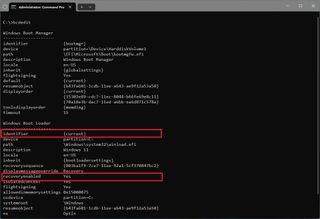Automatic Repair is a built-in feature in Windows 10 and Windows 11 designed to automatically diagnose and fix startup issues that prevent your computer from booting correctly. If your system fails to start properly twice in a row, on the third attempt, this self-repair mechanism kicks in, running diagnostic tests to resolve common boot problems.
While Automatic Repair can be helpful, there are situations where you might want to disable it. For instance, you might prefer to troubleshoot startup issues manually, or you might be experiencing an “automatic repair loop,” where the feature itself becomes problematic and prevents your system from starting. If you’re looking to take control and learn how to cancel auto repair windows 10, this guide is for you.
This comprehensive guide will walk you through the simple steps to disable the automatic diagnosis and repair feature in Windows 10. Additionally, if you decide to re-enable it later, or if it was previously disabled and you wish to turn it back on, we’ll also cover how to do that.
Disabling Automatic Repair in Windows 10
To disable Automatic Repair on Windows 10 after three unsuccessful boot attempts, follow these straightforward steps using Command Prompt:
- Click on the Start button in your taskbar.
- Type Command Prompt in the search bar.
- Right-click on the Command Prompt result that appears at the top and select Run as administrator. This is crucial as you need administrator privileges to execute the necessary commands.
- Once the Command Prompt window opens, type the command
bcdeditand press Enter. This command will display the boot configuration data. - Look for the “recoveryenabled” and “identifier” values under the “Windows Boot Loader” section. Confirm that “identifier” is set to “{current}” and “recoveryenabled” is set to “yes.” This verifies that automatic repair is currently enabled.
- To disable Automatic Repair, type the following command and press Enter:
bcdedit /set {current} recoveryenabled no
In this command, “{current}” specifies that you are targeting the currently running operating system in the boot loader, and the “no” value is used to disable the automatic repair feature.
After completing these steps, the automatic repair feature will no longer initiate after the third consecutive failed boot attempt on your Windows 10 computer.
Re-enabling Automatic Repair in Windows 10
If you have previously disabled Automatic Repair and want to re-enable it, or if it was disabled and you now want to turn it back on for added system protection, follow these steps:
- Open Start.
- Search for Command Prompt, right-click the top result, and choose Run as administrator.
- Type the command
bcdeditand press Enter. - Check the “recoveryenabled” and “identifier” values under the “Windows Boot Loader” section. This time, you might see that “recoveryenabled” is set to “no,” confirming that it is currently disabled.
- To re-enable Automatic Repair, type the following command and press Enter:
bcdedit /set {current} recoveryenabled yes
Here, “{current}” again refers to the current operating system, and the “yes” value is used to enable the automatic repair feature once more.
Once these steps are completed, if your Windows 10 device encounters startup problems, the system will automatically attempt to diagnose the issue and repair any common problems that might be preventing Windows from starting correctly.
By following these simple commands, you can easily manage the Automatic Repair feature in Windows 10, tailoring your system’s behavior to your troubleshooting preferences.

